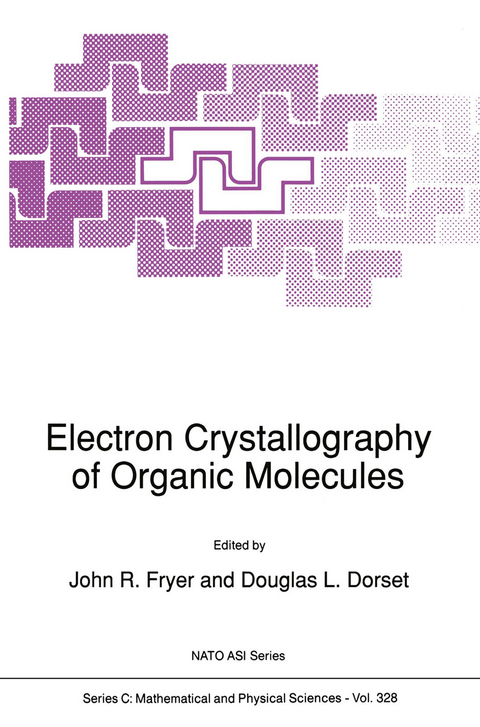
Electron Crystallography of Organic Molecules
Springer (Verlag)
978-94-010-5447-8 (ISBN)
Presented lectures.- Electron diffraction structure analysis of organic crystals..- Crystal structures by electron diffraction: diacetylene monomers and polymers in Langmuir-Blodgett films and single crystals..- Observation of hexatic behaviour in liquid crystals In Situ electron diffraction..- A priori crystal structure modeling of polymeric materials..- Specimen orientation and environment..- Electron diffraction of polymer single crystals..- The prediction of the crystal packing of organic molecules: geometry and intermolecular potentials..- A theoretical technique for layer structure prediction..- Electron microscopy and molecular modelling of some Langmuir-Blodgett films..- Maximum entropy reconstruction of low dose, high-resolution electron microscope images..- The achievement and limitation of high resolution-high voltage electron microscopy..- Crystal structures from high-resolution electron microscopy..- Electron crystallography of radiation-sensitive polymer crystals..- High resolution electron microscopy on VH amylase crystals..- High resolution electron microscopy on liquid crystaline polymers..- Scanning tunnelling microscopy of surface structures..- Polymer decoration:recent developments..- Epitaxial growth of octacyanometalphthalocyanine-metal complex crystals..- Epitaxial crystal growth on organic and polymeric substrates..- Solving difficult structures including those from powder and electron diffraction data. (Lecture in joint session with Direct Methods meeting)..- Direct phase determination in the electron crystallography of organic compounds. (Lecture in joint session with Direct Methods meeting)..- Structure determination at atomic resolution by electron crystallography..- Electron crystallography of bacterial surface proteins..- Structure of hydrogenase from Thiocapsa Roseopersicina..- Cryoelectron microscopy of protein crystals.Some remarks on the methodology..- Electron crystallographic analysis of reconstituted PhoE porin..- Concerning the surface lattice of microtubules..- Correlation averaging and filtering of electron micrographs..- Electron crystallography in an industrial laboratory..- The structure analysis of an organo-azo-calcium salt by high resolution electron microscopy and image processing..- Radiation damage in electron crystallography..- Electron beam damage in polyethylene(PE) single crystals..- An analysis of the broadening induced by beam damage in transmission electron diffraction spots from an oriented aliphatic monolayer..- Discussion session..
| Reihe/Serie | NATO Science Series C ; 328 |
|---|---|
| Zusatzinfo | XIX, 392 p. |
| Verlagsort | Dordrecht |
| Sprache | englisch |
| Maße | 155 x 235 mm |
| Themenwelt | Naturwissenschaften ► Chemie ► Anorganische Chemie |
| Naturwissenschaften ► Chemie ► Physikalische Chemie | |
| Naturwissenschaften ► Geowissenschaften ► Mineralogie / Paläontologie | |
| Naturwissenschaften ► Physik / Astronomie ► Atom- / Kern- / Molekularphysik | |
| Naturwissenschaften ► Physik / Astronomie ► Festkörperphysik | |
| Technik ► Maschinenbau | |
| ISBN-10 | 94-010-5447-9 / 9401054479 |
| ISBN-13 | 978-94-010-5447-8 / 9789401054478 |
| Zustand | Neuware |
| Haben Sie eine Frage zum Produkt? |
aus dem Bereich


